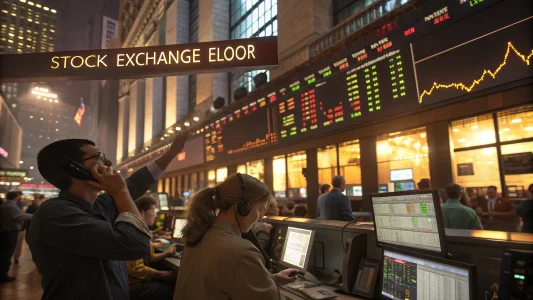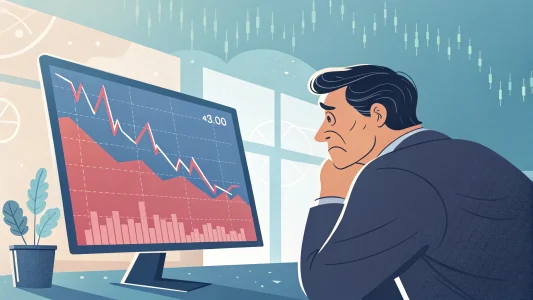Compared three distinct periods in our recent economic history: the late nineties, the long recovery period following COVID, which began in 2021, and today’s slower economic environment. Each of these times brought different strengths, yet in every case, the market maintained high valuations, as seen by the S&P 500 trading at more than 22 times earnings.
Table of Contents
ToggleHistorical Threads in Market Valuations
In the late nineties, the economy was vibrant. It was a time when emerging digital innovations and investor optimism fueled enormous enthusiasm. The job market was robust, with about 250,000 new jobs added every month. Such strong employment figures, paired with rapid economic growth, encouraged investors to pay top dollar for stocks despite high price-to-earnings ratios.
As an observer of market trends, I noted that traditional metrics did not fully explain the excitement around stocks. Even though valuations were high, investors believed that the strong underlying economic performance justified robust market prices. It was a period when confidence in industries and a strong labor market helped support sky-high valuations.
View this post on Instagram
Recovery in 2021 and the Role of Stimulus
In 2021, the world was emerging from the challenges of COVID-19. The economic recovery was fueled by government stimulus and extraordinary efforts to support businesses and households. During this time, the job market saw an impressive surge, adding around 650,000 jobs each month. This period of recovery renewed investor confidence. Liquidity improved, and exceptional economic support drove a wave of buying activity that kept the S&P 500’s valuations high despite uncertainties.
The economic conditions in 2021 were unique. Massive government interventions and a rush of financial resources into the market created an environment of optimism. Even though the elevated price-to-earnings ratios might have raised concerns in isolation, the macroeconomic forces at play helped sustain investor enthusiasm.
Current Economic Conditions and Their Effects
We are witnessing a very different picture. The economy is growing at a slower pace, and job creation has tapered off considerably. Recent data indicates that only 84,000 jobs are added per month. Furthermore, the job market appears to have weakened over the last three months. This starkly contrasts with the robust growth observed in the late nineties and in 2021.
Despite the softer economic backdrop, investors continue to pay high multiples for stocks. The S&P 500 still trades above 22 times earnings. This raises an important question: in a weaker economic environment, can investors expect similar returns to those seen in previous periods?
Given that high valuations were not well-rewarded in the past when economic indicators were stronger, there is considerable uncertainty today. It is worth pausing to consider whether the current market enthusiasm is justified, given that economic fundamentals appear less supportive.
Contrasting Periods: A Closer Look
When I compare these periods, specific differences and similarities emerge:
- Late Nineties: During this period, the market was characterized by a strong economy with substantial job creation. The optimism surrounding new technologies drove stock prices higher, even when the fundamentals were not as robust.
- 2021 Recovery: Following COVID-19, the economic landscape was marked by trillions in stimulus and a rapid increase in employment figures. This liquidity boost spurred significant buying activity, leading to high market multiples.
- Today: In contrast with the previous cycles, the current economic scene shows a marked decline in job growth and overall economic vigor. Yet the market still trades at a similar valuation. This discrepancy raises vital questions about potential risks.
Regardless of the era, investors were willing to pay high prices because they believed in the market’s resilience. However, when the current economic numbers are reviewed, it becomes clear that the strength of consumer spending and job creation now lags behind previous periods.
Implications for Investors
As someone who has closely followed market trends, I believe investors today face a unique challenge. Buying stocks at high multiples when the economy shows signs of slowing can be risky. In past cycles, robust job growth and economic stimulus provided a cushion that justified high valuations. Today, that cushion appears thinner.
The glaring contrast between the economic fundamentals of current conditions and those of the late nineties and 2021 calls for a more cautious approach. Observing how the market handles this weaker economic backdrop will be crucial for future investment strategies.
It is essential to understand that market valuations are not solely a reflection of current economic strength, but rather an interplay of investor sentiment, expectations, and, at times, optimism about future growth. When the underlying figures show softness, investors must be mindful of the increased risks associated with high price-to-earnings ratios.
Personal Reflections and Market Commentary
I have always believed that market signals can offer valuable insights. Over time, my observations have taught me that extraordinary market enthusiasm often comes when economic conditions make the future uncertain. In the past, even when robust economic figures supported high valuations, the returns did not always meet investor expectations.
Today’s situation serves as a reminder that even when the market appears to be thriving, it is essential to keep a close watch on economic fundamentals. Investors who remember the lessons from the late nineties and the recovery period of 2021 might approach the current market with healthy skepticism.
I continue to follow these trends and offer market commentary that strips away unnecessary hype. Instead, I focus on clear, data-driven analysis. This approach not only helps in understanding the market’s current behavior but also aids in making more thoughtful investment decisions.
Assessing Future Prospects
Only time will tell whether current high valuations will lead to rewarding returns for investors. The economic indicators, primarily the slowdown in job growth, suggest caution. It is important to weigh the potential risks. Historically, a robust economic environment helped to justify elevated stock prices. Without that support, one wonders if the current levels can be sustained.
As someone who has analyzed market cycles extensively, I find it prudent to be cautious. While many factors may drive market performance, the current job numbers and economic signals suggest this period may be more volatile than recent exceptional growth cycles.
Final Thoughts
Reflecting on these periods, the key takeaway is that market enthusiasm alone does not guarantee rewarding returns. The strength behind the numbers matters a great deal. In the late 1990s and 2021, strong economic data supported the high valuations. Today, the backdrop is much less convincing.
Investors should remain aware of the contrast between market prices and the actual economic conditions. Although optimism can drive stock prices to lofty levels, it is wise to pay close attention to the underlying financial data, especially during uncertain times.
In conclusion, while the current market remains a topic of interest and debate, caution and careful analysis remain crucial. I hope that my insights help others navigate these complicated times. Evaluating the current market with a clear perspective can contribute to smarter decisions in challenging economic conditions.

















